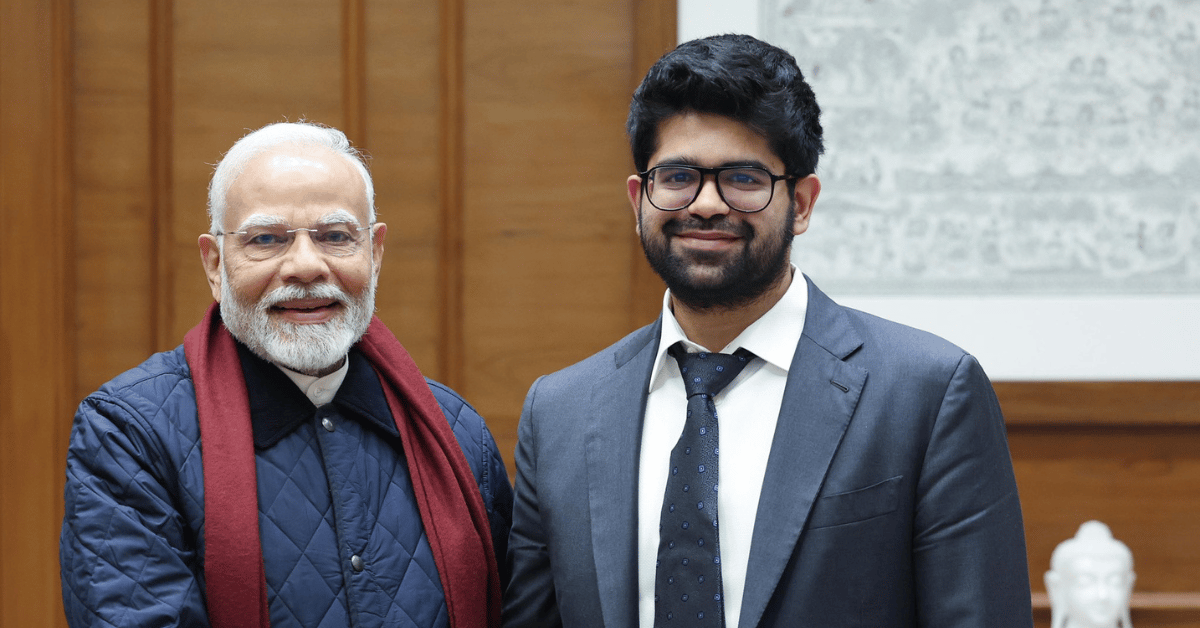Inside the Mind Behind Perplexity AI
Part A: From Chennai to Silicon Valley – Aravind Srinivas’ Journey & AI Fundamentals

Introduction
In the rapidly evolving world of artificial intelligence, few individuals have the clarity and insight that comes from being both a researcher and founder at the cutting edge of the field. Aravind Srinivas, CEO of Perplexity AI, represents that rare combination. In this first part of our multi-part series, we trace Aravind’s remarkable journey from a studious boy in Chennai to becoming a leading figure in AI innovation. Along the way, we’ll unpack the fundamental concepts of AI and intelligence in simple, accessible terms that help demystify this complex domain.
From Chennai to Silicon Valley
Aravind’s story begins in Chennai, India, where he grew up in a family where academic excellence was highly valued. “My mom wanted me to get into IITs. Every time we would go on a bus and pass by the IIT Madras campus, my mom would point to the campus and say ‘this is where you’re going to study,'” he recalls. This unwavering expectation set the foundation for his future path.
Like many Indian students, Aravind developed a strong numerical intuition early on, sparked by his love of cricket statistics. Toward the end of 11th standard, he picked up programming. Though he didn’t perform as well as he hoped in the Joint Entrance Examination (JEE), he secured admission to IIT in electrical engineering.
At IIT, Aravind’s exposure to computer science deepened through competitive programming. His pivotal moment came when a roommate introduced him to a machine learning contest on Kaggle: “It was just a bunch of numbers you downloaded, and you had to figure out a prediction classifier for unseen outputs.” Using scikit-learn, a popular machine learning library, he mixed and matched algorithms, ultimately winning the contest.
This success led to an internship at a Bangalore startup, where he built recommender systems with remarkable efficiency: “My internship which was supposed to be 2 and a half months, I finished in like 3 weeks.” With the extra time, he immersed himself in machine learning, self-taught from Stanford materials, and returned to campus to pursue research.
His dedication eventually earned him admission to a PhD program at Berkeley. There, without an advisor initially, Aravind demonstrated extraordinary discipline: “I would go wake up at 5:30 a.m., I would be the first person in Phil’s coffee, and I would leave at 8:00 p.m. in the evening.” This work ethic produced results – he quickly wrote a paper that got him his advisor, Peter, whose student was John Schulman, an OpenAI co-founder who later helped create ChatGPT.
Schulman invited Aravind for an internship at OpenAI in 2018, where his interaction with Ilya Sutskever proved transformative. When Aravind shared his complex ideas, Sutskever bluntly told him they were “useless” and instead explained that AI is just “two circles” – a big circle representing generative AI and a smaller one representing reinforcement learning, with compute being the key ingredient.
Understanding AI Fundamentals

For those new to AI concepts, Aravind offers remarkably clear explanations. He defines artificial intelligence as “a field of computer science that’s trying to design computers to behave intelligently” – specifically, to accomplish tasks that require intelligence in a manner similar to humans.
Aravind distinguishes between narrow and general AI through examples. A chess program that follows hardcoded rules isn’t general AI – it’s constrained to a specific setting. In contrast, general intelligence refers to “one system doing hundreds of thousands of tasks without explicitly being programmed for it and can be taught new tasks and learn on the fly.”
When explaining neural networks, Aravind demystifies them as “a network of artificial neurons connected to each other layer by layer.” Each artificial neuron is “just a computational unit that takes an input number and gives you an output number.” While inspired by the biological neural network (the brain), neural networks in AI don’t work exactly the same way – and that pragmatic difference is key to their success.
Aravind further clarifies that neural networks are essentially mathematical functions that transform input data, with multiple layers that capture complex patterns. When training these networks, the parameters are updated to minimize errors across a large dataset.
He distinguishes neural networks from the broader field of machine learning: “Neural networks is one way to do machine learning.” Machine learning involves training a computer to make intelligent predictions on new inputs based on patterns in existing data. Other approaches include support vector machines, linear regression, and logistic regression, but neural networks excel when scaling with more data and compute.
The Evolution of Intelligence in AI
Aravind offers a thoughtful perspective on what constitutes “intelligence” in AI systems. Rather than using a rigid definition, he suggests a practical approach: “Can you create a digital remote knowledge worker?”
He points out the shifting definition of intelligence as AI capabilities advance. When computers first mastered chess, that was considered AI. Now that AI can write code, summarize documents, and create art, some argue this still isn’t “real” intelligence. Aravind counters that if we applied this standard consistently, we’d have to say humans writing code was “never an intelligent thing either.”
His functional definition is compelling: if one AI system can write code better than the median software engineer, write emails better than the median executive assistant, and write essays better than the median writer, “that’s pretty intelligent.” While different from human intelligence, the output quality exceeds what most humans can produce across multiple domains.
Conclusion
Aravind Srinivas’ journey from Chennai to leading Perplexity AI illustrates how passion, discipline, and intellectual curiosity can propel someone to the forefront of technological innovation. His ability to distill complex AI concepts into accessible explanations demonstrates why he’s well-positioned to build technology that makes advanced AI capabilities available to everyone.